Husky shedding is something we’ve discussed for many years here on My Happy Husky and in our community of husky owners. The truth is, while huskies are prolific shedders, it doesn’t have to be difficult to manage…
By the end of this article, you’ll be prepared to manage your husky’s shedding without breaking a sweat. Or grabbing the broom!
The best ways to deal with Siberian husky shedding:
1. Never shave their coat
2. Brush at the correct frequency
3. Use the correct kind of brushes
4. Avoid overbathing
5. Provide a healthy diet
6. Provide sufficient exercise
7. Introduce an omega-3 supplement
While these tips may seem basic, they aren’t to be underestimated! Each will be explained in thorough detail below and you may be surprised by some of the info to come!
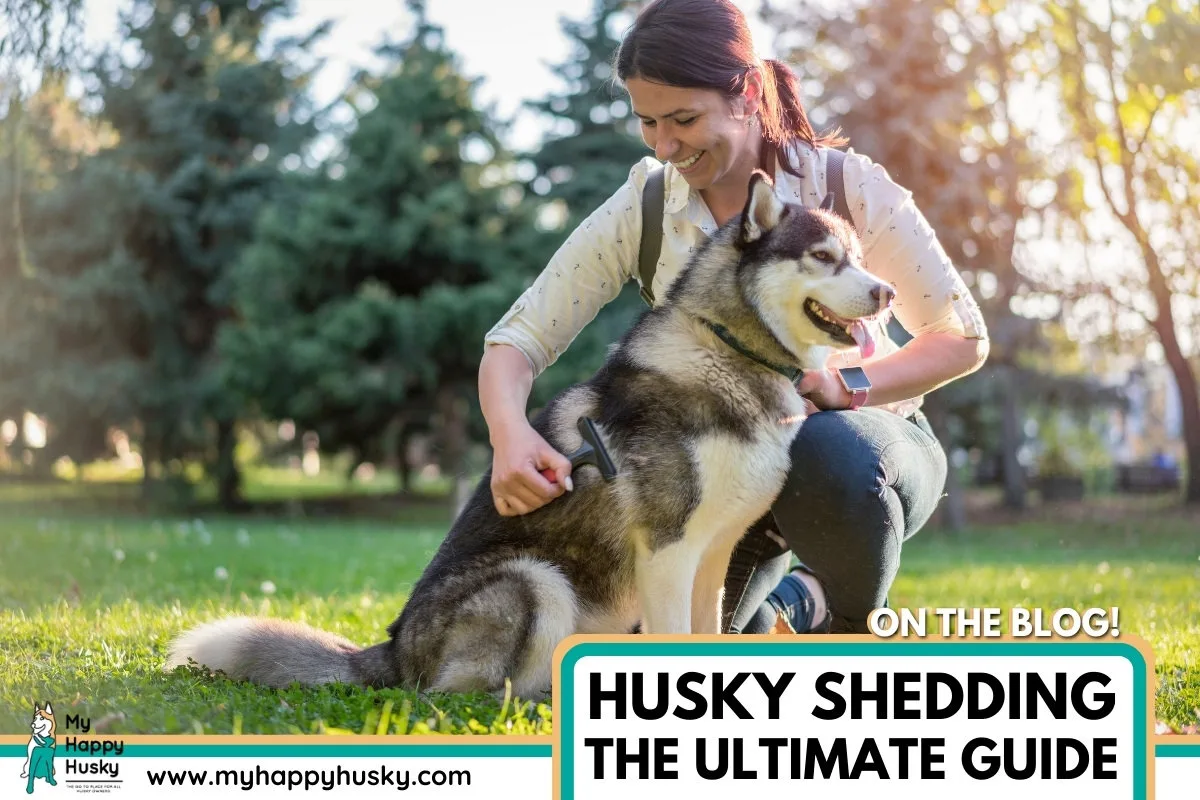
Table of Contents
The 7 Best Ways To Handle With Husky Shedding
There are several ways to manage and reduce the onslaught of dead hair on your floor. Let’s take a look at these tips in more detail.
1. Never cut or shave a husky’s coat
Double-coated dogs, like huskies, should never be shaved. It’s a total myth that shaving a double-coated dog will stop the shedding (or help them cool down!).
Matting becomes a big problem if you shave a double-coated breed. As the undercoat grows much faster than the topcoat, it often outgrows the topcoat and what you’re left with is a tangled mess between the two coats.
Matting is terrible for body temperature regulation and will cause your husky to overheat. This can become a big problem for the summer months when you are specifically trying to keep your husky cool!
One of the main reasons double-coated dogs shed is to effectively regulate their body temperature. This ability is hindered if you shave them.
The topcoat stops direct heat from the sun and other heat sources. If you shave your husky’s coat, in many cases it may grow back matted with an almost velcro-like texture, which will cause any husky to overheat. You may want to read this important article on shaving huskies.
2. Have the correct brushing routine
Brushing your husky at the right frequency is crucial in how well you manage their shedding. It’s one of the most important tips here!
A good amount to brush your husky is around 5-7 times per week.
Little and often is key when it comes to reducing dead hair! I can’t stress this enough.
Owners often forget to brush their husky, so they try making up for it by giving one super long brushing session. Unfortunately, it doesn’t work like that.
➡️ Side note for those huskies that hate the brush:
Sitting down for a good brushing session with your fluffy friend shouldn’t be stressful. I oftentimes see many people struggling with their husky to brush them. Maybe this is you!
If this is the case, you need to re-introduce the brush to your husky so he can build a better association with it.
You can easily do this by having the brush down on the floor when you’re playing with him and have it in his view when you give him treats.
Little things like this can make him feel comfortable with his brush in no time. Then, gradually take it a step further each time until he is comfortable being touched by the brush.
The goal is to make him associate the brush with a positive experience. Then he won’t resist being brushed.
Join Our Facebook Group!
3. Use the correct brushes!
The next crucial thing is to use the CORRECT brushes!
Admittedly, this can be a little confusing because there are so many different types of brushes on the market, from fancy de-shedding tools that cost eye-watering amounts of money to bristle brushes that are best suited to other breeds.
I have tried them all, and the best two brushes BY FAR are a simple undercoat rake (for the undercoat) and a slicker brush (for the topcoat).
I use these two brushes combined in a single session. I start with the undercoat rake for around 10 minutes, then finish off with the slicker brush for another 5-10 minutes. These brushes do everything and I am yet to get better results from any other brush! Trust me.
When I sit down for a brushing session, I start from the head and work my way down in long strokes to the bum area. I make sure I hit every spot then focus specifically on the underbelly neck area as well as the backside where hair usually sheds the most. And don’t forget the tail!
⭐ This also applies to Wooly Huskies too! (check out the full guide)
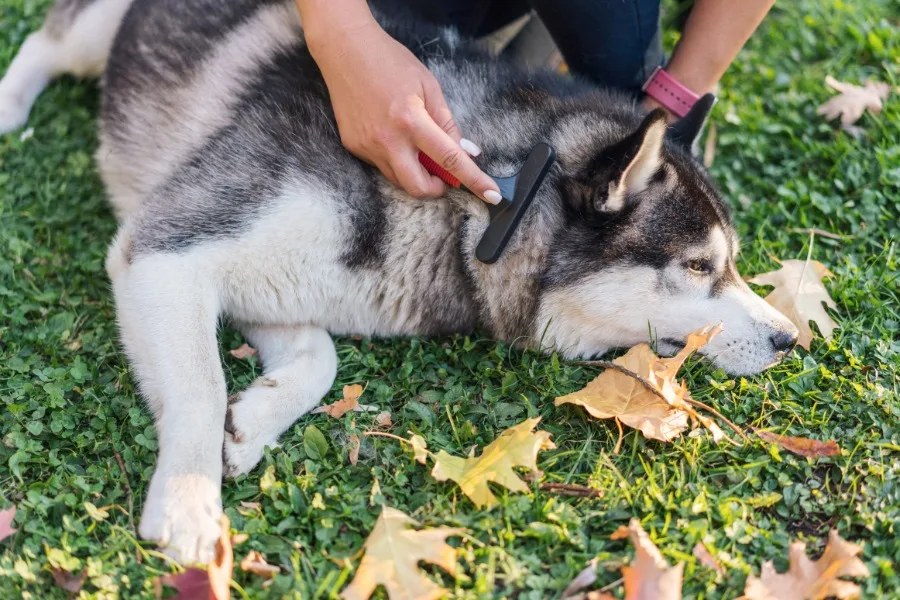
4. Avoid overbathing
Bathing can help get out extra dead fur, but too many baths can risk drying out your husky’s skin, so it’s best to stick to one bath every three or four months.
When it comes to shampoo, I use to consider de-shedding shampoos to be okay but have since changed my stance to using ONLY an all-natural ingredient shampoo.
The reason is that pretty much any shampoo that isn’t natural contains the same harsh chemicals, all of which are no good for your husky’s skin and coat.
➡️ 4Legger is one of the best natural dog shampoos on the market and is our No.1 recommended product in our husky shampoo article
Huskies have very clean coats that do not produce much oil and as a result, they don’t need a lot of bathing. You only really need to bathe your husky once every three or four months.
During the shedding season, you could give your husky one extra bath. This encourages shedding and helps loosen hairs that are ready to be removed.
You can even find bathing brush tools like this one that you can use while your husky is wet.
The main takeaway here is that bathing can help, but overbathing should be avoided at all costs.
5. Provide a healthy diet
“You are what you eat” is true for dogs as well.
Your husky’s skin and his coat are a reflection of his general health and well-being. If your husky’s diet and nutrition are not kept in check, it can make shedding much worse.
Although shedding usually happens because of the changing seasons and climate throughout the year, it can also happen if he isn’t receiving enough nutrients or suffering from allergies.
Huskies have sensitive stomachs and disagree with many types of food. Many commercial dog foods contain allergens that huskies are sensitive to.
Allergies can often lead to dry skin, which could cause dandruff, and finally make their fur brittle, causing more to shed.
Be sure to avoid foods with common allergens and provide sufficient levels of Omega-3 fatty acids. These nourish the skin very well, thus making his fur healthier and stronger.
For all-around better skin and coat health, try adding some salmon (no bones), olive oil, or flaxseed oil to his diet.
My preferred method: You can also try a Salmon oil supplement from Zesty Paws. This will likely improve his skin and coat in a short amount of time. ➡️ Check out the reviews here on Amazon.com
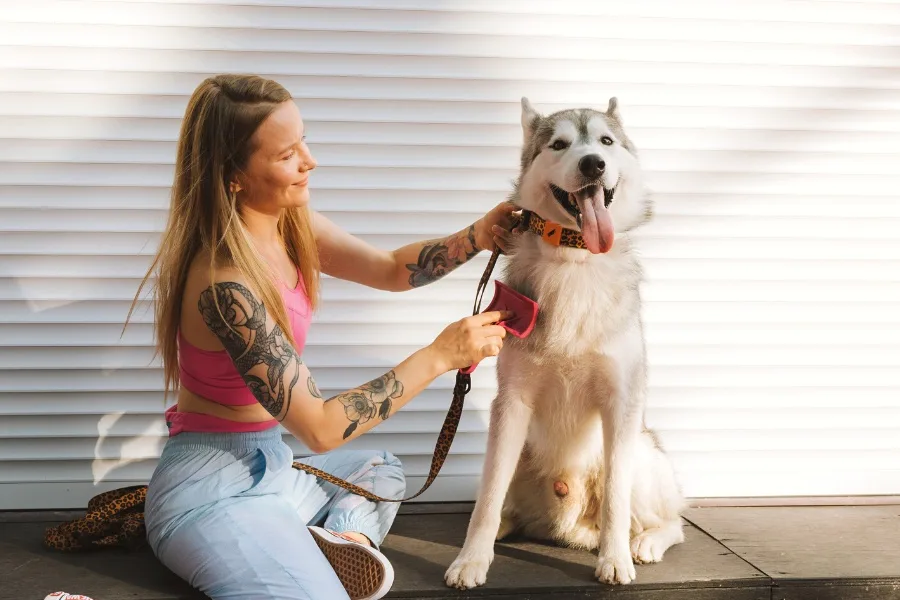
6. Provide sufficient exercise
Husky and exercise may as well be the same word! Owners should already exercise their husky twice a day for at least 1 hour each time.
Take your husky out for extra runs during the shedding season. Not only will the running and jumping help free up and remove the dead fur, but it will help to keep him healthy.
Keeping him in good health will allow him to shed efficiently and properly.
I always tell owners how exercise is often underestimated, especially regarding skin and coat health. So be sure to think about your current routine and tweak it if necessary.
7. Introduce an Omega 3 supplement
If your husky’s food doesn’t already contain Omega 3, then it’s certainly worth trying a fish oil/omega-3 supplement.
Of course, it’s advised to consult your veterinarian first about this, but in general, this kind of supplement is safe for any dog to be consuming.
A diet rich in Omega 3 will improve the health of your husky’s skin and coat. It will lead to stronger hair follicles and prevent hair from becoming dry and brittle.
In some situations, owners have reported a “significant” difference to their husky’s coat. Not only does it make the coat fluffier, shinier, but a stronger coat may also result in less hair being shed.
Not to mention Omega 3 has several other significant health benefits. It’s certainly worth trying in our opinion.
Related article: Best vacuums for husky hair (that won’t break the bank)
When Do Huskies Shed?
Most huskies shed consistently for the entire year, with one or two heavy shedding periods in spring and sometimes just before winter, often called “blowing their coat.”.
However, there can be exceptions to this, and it’s possible that your husky may not necessarily blow his coat or shed much at all.
This can be related to the climate you live in, diet, coat maintenance, genetics, and in some cases their overall health.
In warm climates, huskies will shed continuously at a high level. In cooler climates and northern regions, they might not shed much at all.
By shedding their undercoat, they create a small air pocket between their skin and their topcoat. This will protect the direct heat and allow for better air circulation, effectively cooling them down.
Related article: Keeping your husky cool in summer
How Long Do Huskies Shed For?
Huskies shed for the entire year, but in terms of blowing their coat, this usually lasts around 3-5 weeks, depending on how well owners manage their shedding on a regular basis.
The best advice is to make the tips listed above a part of your regular routine. This way, you won’t need to make any drastic changes all of a sudden in order to keep up with the shedding. By following the above tips, you’ll always be on top of the shedding no matter what time of the year it is.
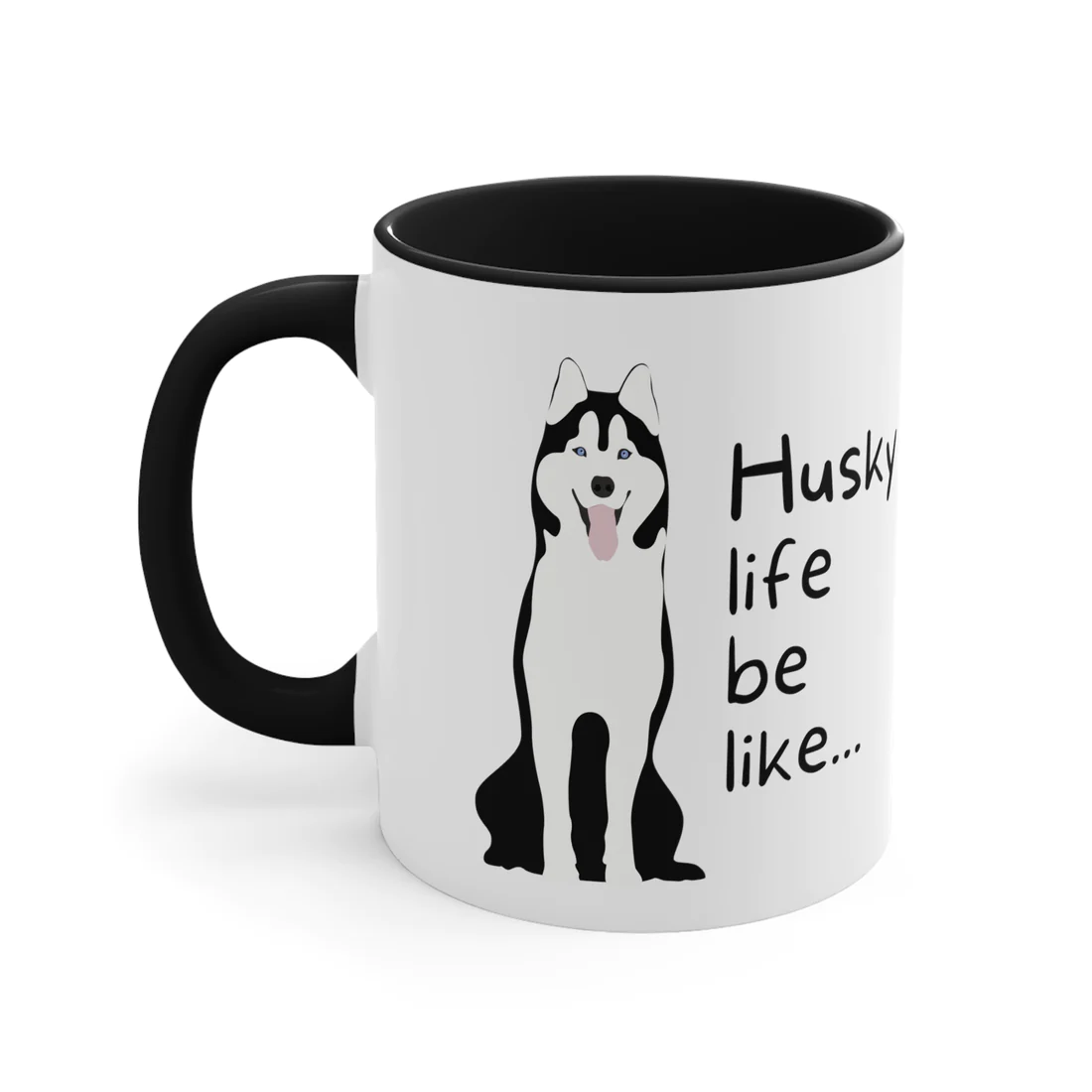

Important Related Articles:
- Is The FURminator Good For Huskies? Our Honest Review
- 7 Best Natural and Gentle Shampoos For Huskies
- How Often to Bathe Your Husky
Husky Shedding Tips & FAQ’s
When’s Husky Shedding Season?
Husky shedding season can vary and mostly depends on the climate where you live. When your husky sheds or “blows” their coat will be closely related to when it gets colder or warmer. No one answer fits all.
How Much Do Huskies Shed?
It’s hard to say how much exactly huskies will shed, but if needed, they will shed their entire undercoat. It depends a lot on the climate where you live and just how warm it gets. The warmer it is, the more likely your husky will shed his entire coat. In cold climates, some huskies hardly shed at all.
How Long Do Huskies Shed For?
Huskies usually shed at a balanced rate all year round, and have two big blowouts as the weather changes. The length of these bigger “blowouts” can last anywhere from 2-4 weeks, sometimes even longer.
Best Way to Deshed a Husky?
The best way to de-shed a husky involves using two different types of brushes and following a strict brushing routine 3-4 times per week.
Each session should start with an undercoat rake for 10 minutes (to de-shed) then finish with a slicker brush for 10 minutes (to clear out the topcoat). There are no magic tricks, just follow a consistent routine.
Why Is My Husky Shedding So Much?
It could be that your husky is experiencing a blowout whereby he’s shedding his entire undercoat to make way for new hair. If the shedding is causing balding or coming at an unusual time for a blowout, this then sounds more like a health issue and a veterinarian appointment is recommended.
As huskies do shed a lot anyway, it can be difficult to know when it’s excessive. It’s always important to watch your husky for other symptoms alongside shedding.
Blowouts typically only happen around springtime before the weather gets warmer, and again heading into winter to grow a new undercoat. Other than this, a blowout would be considered unusual.
Why Is My Husky Going Patchy?
If your husky is shedding so much to the point you can see their skin, it could indicate a health issue. If your husky is shedding to this extent, it’s best to contact your veterinarian as soon as possible.
Some other articles that may help
Here are some other articles that I think supplement this one well, so check them out!
The Best and Most Affordable Pet Vacuums For Husky Hair
Best Brushes For a Husky | The Ultimate Guide
Final Thoughts
The best way to deal with your husky shedding is to understand the shedding process and ensure you are doing what you can to make it an easy and efficient process.
When you chose to get a Siberian Husky, you secretly gave up your rights to a hair-free floor! Do your best with the tips above and it will surely help you.
Shedding is an important process for your Husky so help him by learning all you can about creating a healthy grooming routine.
Thank you for reading!
Helpful resources: Pet MD Dog Shedding
Most Recommended For Huskies
Best Brushes For Husky Shedding
The Furminator Undercoat Rake and a Hertzko Slicker Brush are by far the two best brushes that any husky owner should use.
Best Online Training Program For Huskies
Brain Training For Dogs has become very popular with Siberian Huskies in the last few years. Owners that have tried it say amazing things about the incredible results and how easily implemented the training is.
Best Husky Puppy Book
If you would like an easy to read guide for training your husky puppy, check out my book The Husky Puppy Handbook on Amazon. All purchases are greatly appreciated.
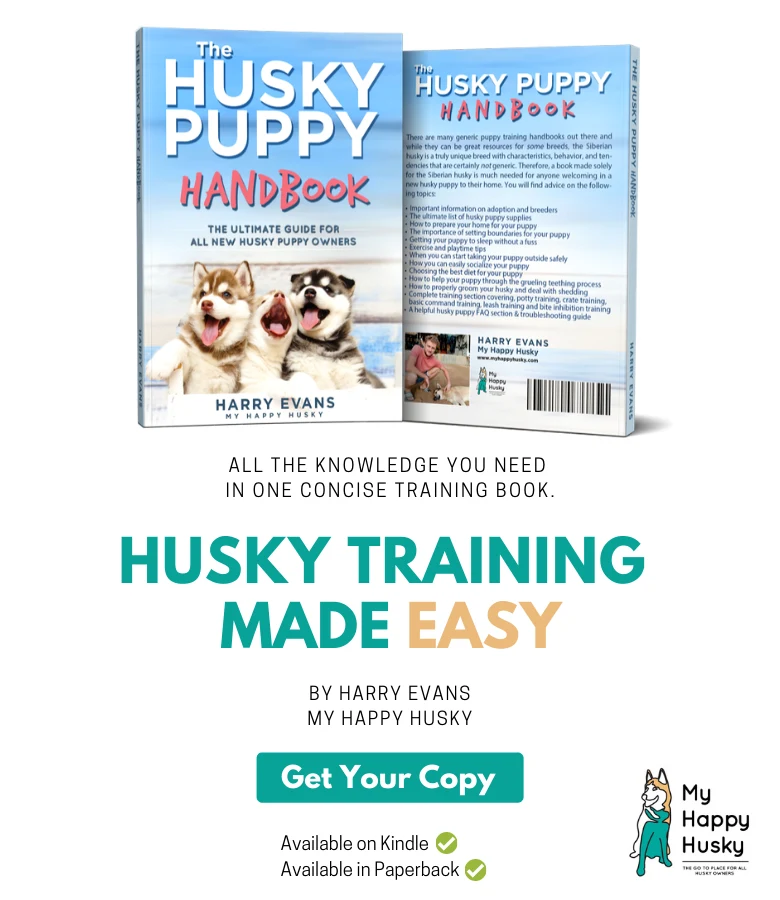
Disclaimer
The advice given in this article is for educational purposes only and does not constitute professional advice in any context. Before making any decisions that may affect the health and/or safety of your dog, you should always consult a trained veterinarian in your local area. For the FULL disclaimer Visit HereCopyright Notice: The content produced and published on My Happy Husky is unique and original. My Happy Husky makes an active effort to search for plagiarized content using plagiarism detection software. If plagiarized content is found, action will be taken.
